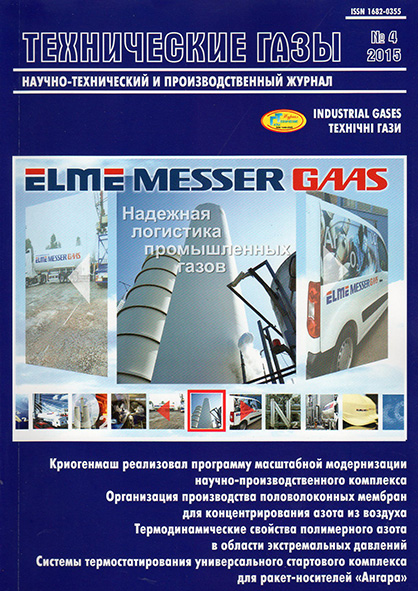ОСОБЕННОСТИ НЕРАСЧЁТНЫХ РЕЖИМОВ РАБОТЫ ВОЗДУШНОГО КОНДЕНСАТОРА КРУПНОТОННАЖНОЙ АММИАЧНОЙ ХОЛОДИЛЬНОЙ УСТАНОВКИ
DOI:
https://doi.org/10.18198/j.ind.gases.2015.0783Ключевые слова:
аммиачная холодильная установка, конденсация аммиака, воздушный конденсатор аммиака, поверхность теплообмена конденсатора, температура конденсации аммиака, температурный напор, вентилятор воздушного охлаждения, расход аммиака, производительностьАннотация
Аппараты воздушного охлаждения широко применяются в химической промышленности для конденсации аммиака. В основном их изготавливают по специальному проекту. Рассмотрены конструктивные особенности воздушного конденсатора крупнотоннажной аммиачной холодильной установки и действительные показатели его работы. Установлено влияние различных режимов работы вентиляторов на эффективность работы конденсатора. Предложены два алгоритма включения их в работу. Первый — заключается в последовательном включении вначале всех нечётных вентиляторов, расположенных первыми по ходу движения аммиака, а затем — чётных. Второй — характеризуется включением в работу вначале чётных вентиляторов, расположенных вторыми по ходу движения аммиака, а затем — нечётных. Вентиляторы включаются в работу симметрично от центра конденсатора. Анализ показал, что второй алгоритм включения в работу вентиляторов является более предпочтительным. Применение на практике нового алгоритма работы вентиляторов позволит плавно регулировать тепловую нагрузку конденсатора, стабилизировать его работу и снизить расход электроэнергии на привод вентиляторов.
Загрузки
Выпуск
Раздел
Лицензия
ЛИЦЕНЗИОННЫЙ ДОГОВОР
После приёма статьи к публикации редакция согласно требованиям наукометрических баз каждому из авторов направляет лицензионный договор об уступке и передаче в управление авторских прав. Подписи автора (авторов) желательно скрепить печатью отдела кадров учреждения, в котором работает автор (авторы), или печатью факультета.
Редакция отсылает авторам одну верстку для корректуры. Допустимы лишь те исправления, которые приводят верстку в соответствие с исходным текстом статьи. Внесение существенных изменений не допускается. Верстку следует выслать в редакцию в течение суток с момента получения.

